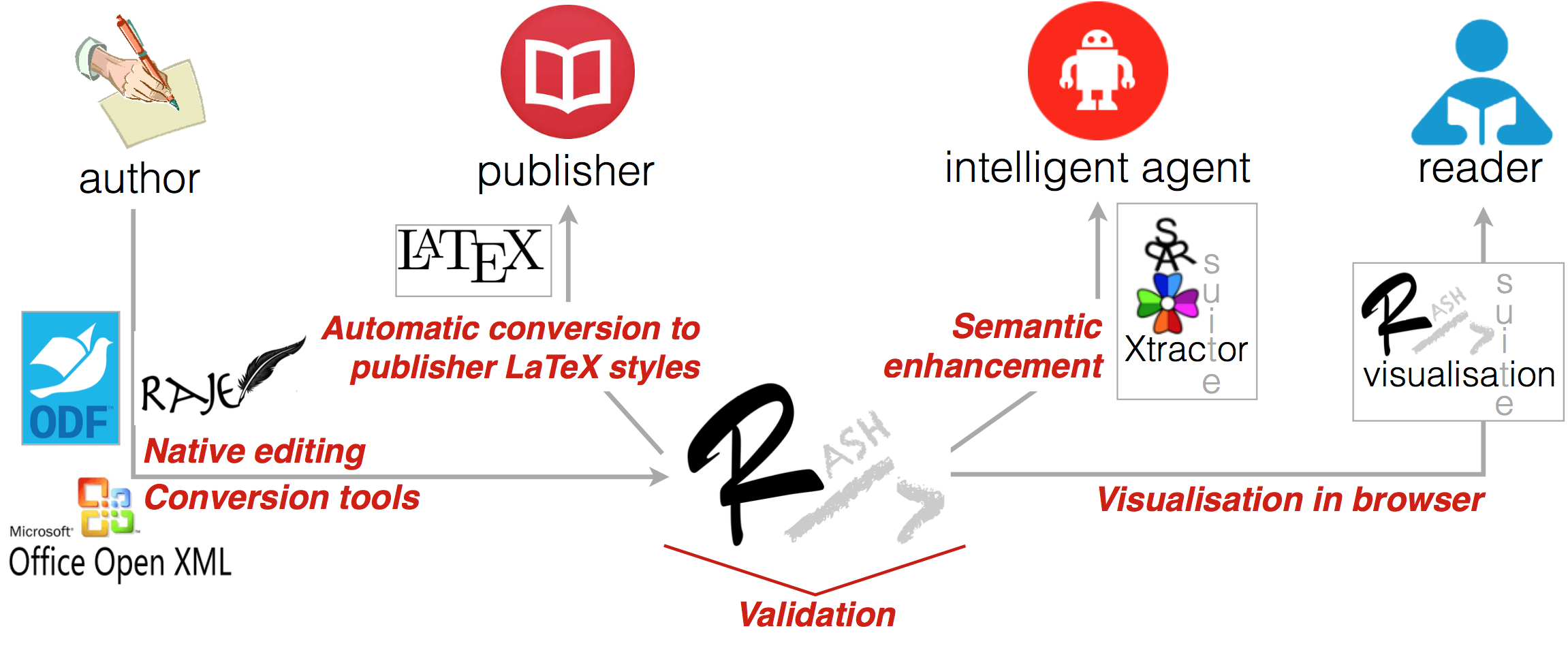The framework

-
RASH format: a markup language that restricts the use of HTML elements to only 32 elements for writing academic research articles and allows authors to use embedded RDF annotations
Visualisation: CSS files and Javascript scripts have been developed in order to visualise RASH documents according to different layouts
Validation: RASH has been developed as a RelaxNG grammar and each RASH document can be checked against that grammar by means of two validators
Enhancement: the SPAR Xtractor Suite enriches a RASH document by annotating its markup elements with their actual structural semantics defined by entities included in the FRBR-aligned Bibliographic Ontology and the Document Components Ontology
Writing: use RAJE (the RASH wordprocessor) for creating HTML-native scholarly articles or, alternatively, use your favourite editor between Apache OpenOffice and Microsoft Word and follows the appropriate document preparation guidelines available in the Framework
Conversion: use ROCS for converting your RASH article in LaTeX so as to be easily processed by journals, workshops, and conference, or use the various converters ROCS adopts to create your conversion pipeline and thus to convert RASH documents into different LaTeX styles (such as ACM ICPS and Springer LNCS) or to translate ODT and DOCX documents into RASH